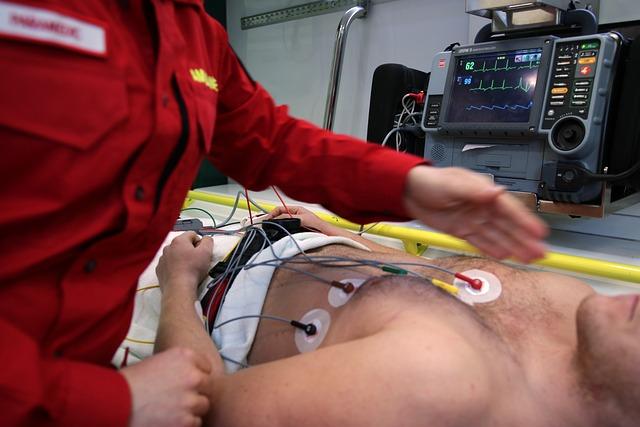Understanding the Technology Behind Medical Electrodes
Medical electrodes play a crucial role in modern healthcare, enabling the measurement and recording of electrical signals from the human body. These signals provide valuable insights into various physiological processes and are essential for diagnosing and monitoring medical conditions. While medical professionals rely on these electrodes for accurate data, it is equally important for them to understand the underlying technology behind these devices. In this blog, we will explore the different types of medical electrodes, their components, the technology behind signal acquisition, innovations in electrode technology, and the future outlook for this field.
Types of Medical Electrodes
Medical electrodes are essential tools used in healthcare to measure and record electrical signals from the human body, providing valuable insights for the diagnosis and monitoring of various medical conditions. There are different types of medical electrodes designed for specific applications that can elevate your EEG and ECG testing accuracy and reliability. Whether it's surface electrodes for non-invasive measurements or needle electrodes for more invasive procedures, selecting the right electrode can enhance the diagnostic capabilities of healthcare professionals
One type of medical electrode commonly used for non-invasive measurements is the surface electrode. Surface electrodes make direct contact with the skin and are typically used in procedures like electrocardiography (ECG) and electromyography (EMG). These electrodes capture electrical signals produced by the underlying tissues, allowing for accurate data collection and analysis.
For more invasive measurements, needle electrodes are utilized. These electrodes are inserted directly into muscles or nerves to capture signals more accurately. Needle electrodes are commonly used in procedures such as nerve conduction studies and electromyography, where precise measurements are crucial.
Invasive electrodes, such as intracranial electrodes, are designed for monitoring brain activity. These electrodes can be placed either on or inside the brain to capture electrical signals and provide valuable information for diagnostic purposes.
By understanding the different types of medical electrodes available, healthcare professionals can choose the most suitable electrodes for their EEG and ECG testing. This selection is crucial for ensuring accurate signal acquisition and high-quality data.
Components of Medical Electrodes
Medical electrodes consist of several key components that contribute to their functionality. Conductive materials, such as silver/silver chloride or stainless steel, facilitate the transfer of electrical signals between the body and the electrode. Adhesive materials ensure proper attachment of the electrode to the skin or other body surfaces, preventing movement and ensuring good signal quality. Electrode sensors, which can be made of various materials like metal or conductive polymers, detect and convert electrical signals into measurable data.
Technology Behind Signal Acquisition
The signal acquisition involves the amplification and filtering of electrical signals captured by the electrodes. Amplification is necessary to enhance weak signals, making them easier to measure and interpret. Filtering techniques are used to remove unwanted noise and artifacts from the signals, ensuring clean and accurate data. These processes play a vital role in medical diagnosis and monitoring, as the quality of the acquired signals directly impacts the accuracy of the results.
Innovations in Medical Electrode Technology
Advancements in technology have led to the development of wireless and wearable electrodes. Medical professionals often take radiology CE courses online to stay updated with the latest innovations and technologies so they can provide the best possible care to their patients. These electrodes eliminate the need for cumbersome cables and allow patients to move freely while being monitored. They are particularly useful in applications like long-term Holter monitoring or sleep studies. Furthermore, smart electrodes integrate with other technologies like artificial intelligence and machine learning, enabling real-time analysis and interpretation of data. This integration opens up new possibilities for personalized healthcare and remote patient monitoring.
Challenges and Future Outlook
While medical electrodes have revolutionized healthcare, there are still challenges to overcome. Ensuring good skin-electrode contact, minimizing motion artifacts, and optimizing signal quality are ongoing concerns. However, advancements in material science, miniaturization, and wireless technologies offer promising solutions. The future looks bright for medical electrodes, with potential applications in fields like telemedicine, sports medicine, and neurorehabilitation. With continued research and development, we can expect even more accurate and versatile electrode technologies in the near future.
Understanding the technology behind medical electrodes is essential for healthcare professionals who rely on these devices for accurate diagnosis and monitoring. Different types of electrodes, such as surface, needle, and invasive electrodes, serve specific purposes in capturing electrical signals from the body. The components of medical electrodes, including conductive materials, adhesive materials, and sensors, contribute to their functionality. The signal acquisition involves amplification and filtering techniques, ensuring accurate data collection. Innovations in electrode technology, such as wireless and wearable electrodes, as well as smart electrodes, have opened up new possibilities for personalized healthcare and remote monitoring.
While challenges persist, the future outlook for medical electrode technology is promising, with potential applications in various healthcare fields. By staying up-to-date with advancements in this field, healthcare professionals can harness the full potential of medical electrodes and provide better care for their patients.

